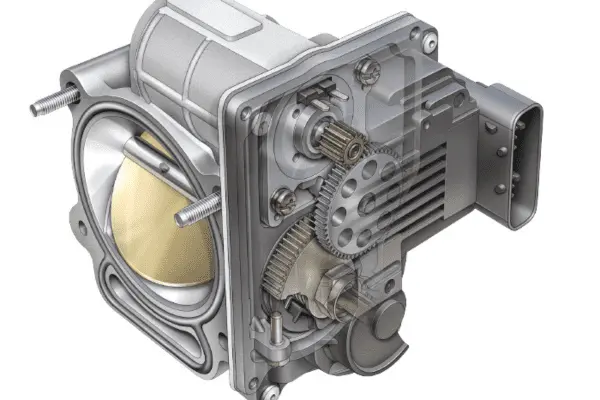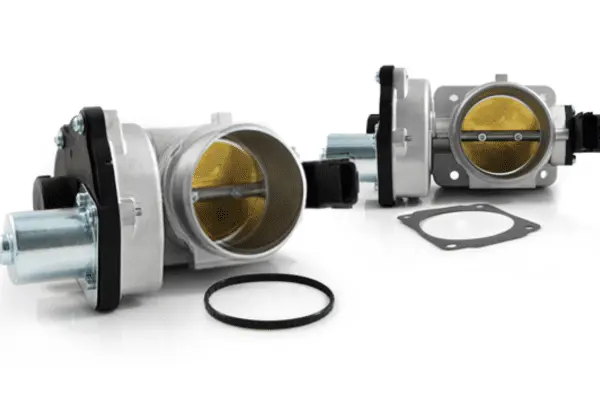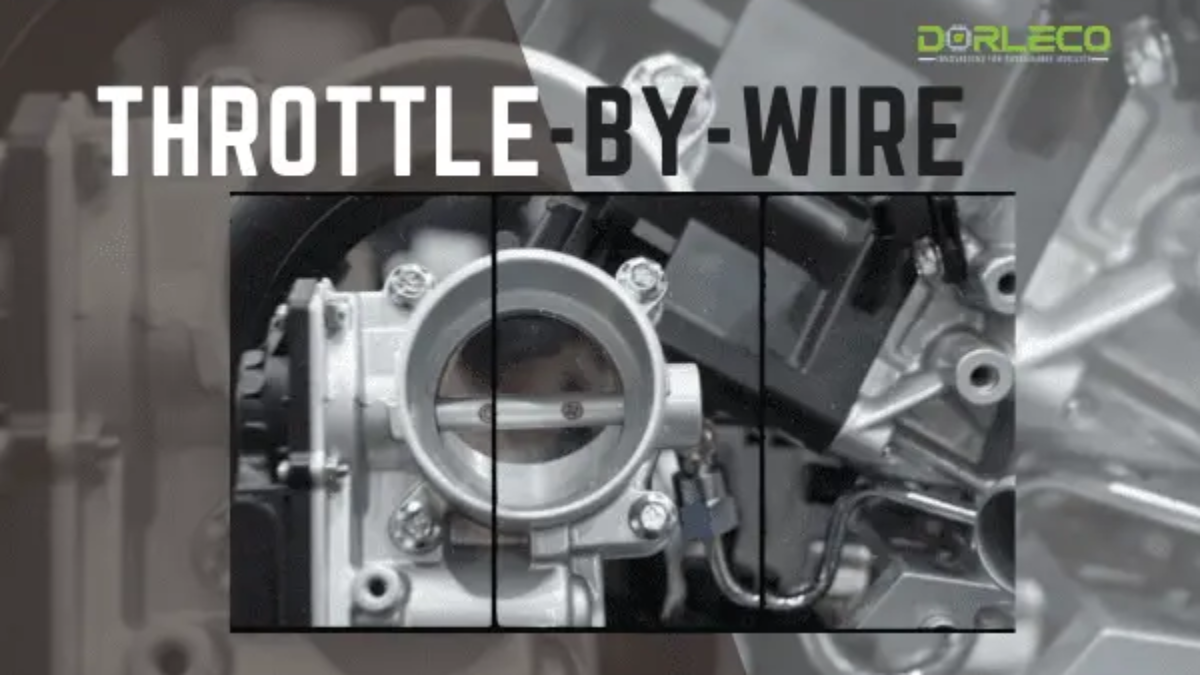Understanding Throttle-By-Wire
The sophisticated electronic control technology known as throttle-by-wire (TBW) is set up in numerous contemporary buses, exchanges, motorbikes, and other motorized vehicles. In discrepancy to conventional mechanical throttle systems, which depend on a factual physical connection between the throttle body and the accelerator pedal, TBW backup’s electronic detectors, and selectors for this mechanical liaison.
Unnaturally, the TBW workshop converts the accelerator pedal input from the motorist into electrical impulses, which are later reused by a vehicle control unit (VCU). To calculate the proper throttle position based on variables including machine speed, cargo, and driving circumstances, the VCU interacts with several detectors located throughout the auto.
One of the technologies that has gained wide acceptance within the automotive sector is throttle-by-line. Trustability in enterprises is being raised by mechanical element wear and tear, gash, inefficiency, and growing complexity.
Automakers have started replacing crucial essential rudiments in the traditional vehicle, including the thickets, steering, throttle control, and shifter, with electromechanical or indeed entirely electronic factors. We concentrate on” throttle by line” technology in this essay. When compared to an electronically controlled steering or retardation system, this is one of the safer designs to use. This system, also called electronic throttle control (ETC), takes the place of the mechanical link that formerly connected the machine’s throttle stopcock and pedal.
Rather, there are two detectors along with a control unit.
The throttle pedal position detector is the main detector used, and its job is to measure how important it is when the motorist depresses the pedal. This detector may be a resistive position detector or a pressure detector. Because they’re less susceptible to noise, pressure detectors are generally used over resistive position detectors. The vehicle control unit (VCU) receives the gathered data, computes the necessary energy or current, and also sends this information to the Electronic Throttle Control (ETC) system. The control unit also controls how important the throttle stopcock is in response to the motorist’s requests for acceleration.
There is also another detector that keeps an eye on the throttle opening and feeds back information to the regulator so that commands to open the throttle stopcock are accurate. The pinion gear, intermediate gear, and sector gear are responsible for controlling the drop from the motor actuation angle to the throttle opening angle. This regulator is generally included within the VCU, and the CAN machine protocol is used to simplify communication between factors.

Advantages compared to mechanical control
By integrating numerous safety measures, an electronic throttle regulator can greatly ameliorate riding dynamics. Electronic throttle control systems can do more than just dissect accelerator pedal impulses, unlike mechanical systems that can modify the throttle based on motorist input.
To help correct motorist crimes and save vehicle stability, they also cover inputs from retarding movements, steering responses, and slipping and gripping the bus. The smooth integration of electronically controlled systems with other vehicle systems is one of the main benefits of these systems over their mechanical counterparts. The electronic throttle control (ETC) is an illustration of this point.
Electronic throttle control makes it easier for automakers to include other systems in the design of the auto, similar to machine operation, traction control, electronic stability control, and voyage control.
Crucial safety features in the electronic throttle regulator
Several fail-safe features are included in the electronic throttle control system, making it incredibly robust and reliable for use in any kind of vehicle. Generally, when the system notices something strange in the electronic signals that are being transferred back and forth between different corridors, it closes the throttle and keeps the machine or motor running. This safety measure is essential for avoiding unintentional acceleration, which may result in disastrous mishaps. The detector arrangement also has numerous redundancies, with one or more backup detectors allocated to each position. This ensures that the safe operation of the vehicle isn’t compromised in the event of a single detector malfunction.
Likewise, there’s concern about the possibility of mobile phone signals snooping into electronic control and communication systems. It’s essential to duly insulate the distribution of signal frequency for colorful purposes to reduce this threat. In addition, an Electronic Throttle Control (ETC) system adds a boscage-throttle override function that can be acclimated according to the driving mode, which further improves vehicle safety. For illustration, when both are engaged coincidentally during normal driving conditions on paved roads, the system gives preference to the boscage instruction.

But specialist modes like drag and drift bear certain conditions for throttle and boscage commands. Both commands may be inversely important in drift mode, whereas the throttle command takes priority in drag mode. When the motorist applies pressure to the thickets during an unintentional acceleration, this becomes further pivotal. Creating electronic connections between mechanical corridors makes it easier to put an override protocol in place, which improves productivity and guarantees dependable and responsive control.
The throttle position detector is an essential element of unrestricted-circle control, and its responsibility is increased by several fail-safe measures. Numerous original outfit manufacturers (OEMs) have formerly included this technology in their buses, and there’s presently a lot of exploration being done to ameliorate the safety and responsiveness of electronic throttle control.
Future Trends and Innovations in Throttle-By-Wire Technology
As technology advances, throttle-by-wire systems are expected to evolve with new features and integrations.
- Integration with Autonomous Driving Systems
Throttle-by-wire technology plays a key role in autonomous driving by facilitating seamless vehicle control.
- Sustainability and Environmental Impact
Efforts to improve fuel efficiency and reduce emissions are driving innovations in throttle-by-wire technology.
- potential for Customization and Performance Tuning
Enthusiasts can explore tuning options to modify throttle-by-wire systems for enhanced performance, always considering safety implications.
Summary
Throttle-by-Wire technology has revolutionized the automotive industry, offering precise control and enhanced driving experiences. Understanding its functions, safety measures, maintenance procedures, and future developments is crucial for drivers and enthusiasts alike.

Development of Throttle-by-Wire Controls at Dorleco
Our main goal at Dorleco is to advance control sense by exercising a tackle setup that consists of a throttle pedal, a control module, and detectors that are used to describe the position of the pedal as well as the opening of the throttle. We use feed-forward and feedback control methods in tandem to efficiently handle faults and produce extremely accurate labor.
FAQs
1. Is throttle-by-wire only found in modern vehicles?
Throttle-by-Wire technology is predominantly used in newer vehicles, but some older models may also have implemented this system.
2. Can throttle-by-wire systems be modified for increased performance?
While it is possible to tune throttle-by-wire systems for enhanced performance, it is recommended to consult with professionals to avoid compromising safety and reliability.
3. Are there any potential drawbacks to using throttle-by-wire technology?
Like any electronic system, throttle-by-wire technology can be susceptible to malfunctions or failures, which is why regular maintenance and proper troubleshooting are essential.

